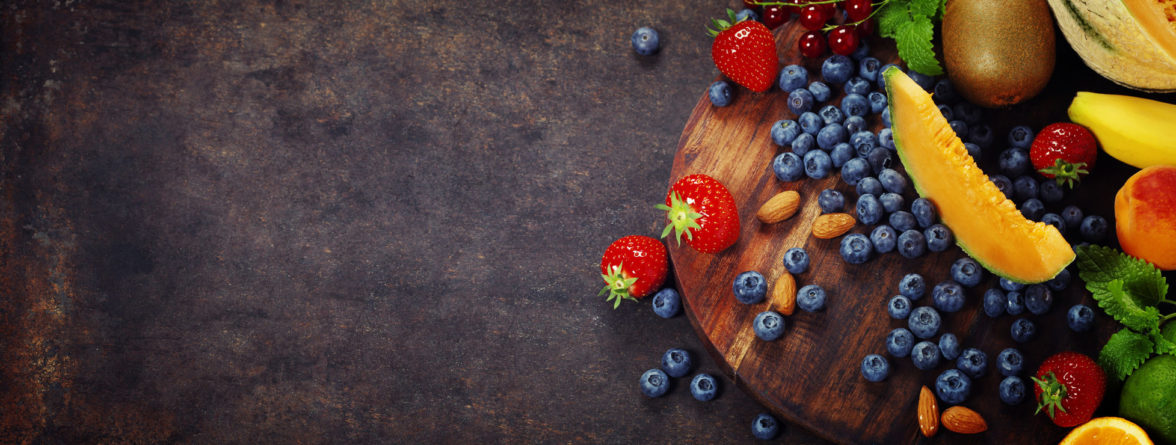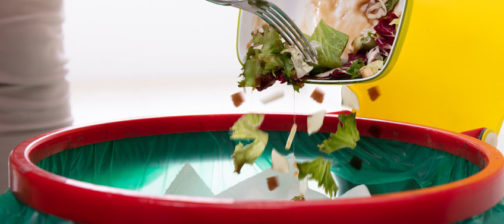In these hot Texas summers, nothing is more refreshing than a delicious piece of fruit. When eating clean, often we turn to this natural dessert to satisfy our sweet tooth. And why not as it’s full of vitamins, minerals, phytochemicals, and fiber! However, it’s not completely without its drawbacks. When consumed in excess, fructose, the sugar found in fruit, can be damaging to the body and lead to a myriad of problems. So how much is too much? In this post, we look at Dr. Brown’s rules to eating fruit, the fructose burden of specific fruits, and his suggested ideal daily intake.
Rules to Eating Fruit in General
If you read our previous posts titled “Food Pairing: Even Your Meals Need Organizing” and “7 Habits for Optimal Digestion,” then you have been introduced to the role of fruit in the Dr. Brown Diet. To summarize the points made in those articles as well as introduce a new “rule,” here are three suggestions regarding the consumption of fruit:
1. Eat fruit in its natural state.
As consistent with most of Dr. Brown’s optimal eating suggestions, eating fresh fruit the way it is found in nature is best. (Frozen is an acceptable second choice.) Fruit juice and dried fruit, however, should be avoided. Fruit juice has a much higher fructose content since it takes several pieces of fruit to make one serving of juice. It also lacks the natural fiber that helps the body digest the fruit optimally. Dried fruit also has a much higher fructose content per serving and lacks the natural water content that aids in digestion.
2. Eat fruit by itself away from other foods.
Fruit digests rather quickly. But when paired with other foods that take longer to digest like protein or starch, the body will prioritize the digestion of those other foods first. The fruit then sits in the stomach and ferments. This fermentation can lead to gas, bloating, and even a lock of B-vitamins.
3. Seek to limit daily consumption of fructose to 25 grams per day to keep blood sugar stable and avoid fatty degeneration.
Fruit contains many beneficial nutrients including vitamins, antioxidants, and soluble fiber. However, too much can cause the blood sugar to rise and then fall to a lower-than-normal level, a condition known as reactive hypoglycemia. Symptoms of reactive hypoglycemia include weakness, hunger, headaches, and trembling just to name a few.1
The sugar found in fruit is a combination of both glucose and fructose. Glucose is the form of sugar that can be used by the body’s cells for energy. Fructose, on the other hand, can not and must be metabolized by the liver. The liver metabolizes the fructose by turning it to fat and sending that fat to the cells. When faced with an overload of fructose, the liver can actually be damaged. This leads to insulin resistance and even fatty liver disease, much like the repercussions of excess alcohol consumption.2
Assessing the Fructose Burden in Specific Fruits
The ratio of glucose to fructose is different for each fruit. So in order to follow #3 above, it is important to look at the actual fructose content in particular fruits. Here is a list of 35 common fruits and the grams of fructose in a typical serving size. You can use this list to calculate your daily intake. Try and stay under Dr. Brown’s recommended 25 grams fructose per day, especially if you are dealing with insulin resistance or weight issues. Click here to download and print this chart for your reference. Here is another good article for further explanation.
|
Fruit |
Serving |
Grams Fructose |
|
Limes |
One |
0 |
|
Lemons |
One |
0.6 |
|
Cranberries |
1 cup |
0.7 |
|
Passion Fruit |
One |
0.9 |
|
Prune |
One |
1.2 |
|
Apricot |
One |
1.3 |
|
Guava |
Two |
2.2 |
|
Dates (Deglet) |
One |
2.6 |
|
Cantaloupe |
1/8 |
2.8 |
|
Raspberries |
1 cup |
3.0 |
|
Kiwi |
One |
3.4 |
|
Blackberries |
1 cup |
3.5 |
|
Star Fruit |
One |
3.6 |
|
Cherries |
10 |
3.8 |
|
Strawberries |
1 cup |
3.8 |
|
Pineapple |
1 slice |
4.3 |
|
Boysenberries |
1 cup |
4.6 |
|
Tangerine/Mandarin |
One |
4.8 |
|
Nectarine |
One |
5.4 |
|
Peach |
One |
5.9 |
|
Orange |
One |
6.1 |
|
Papaya |
Half |
6.3 |
|
Honeydew |
1/8 |
6.7 |
|
Banana |
One |
7.1 |
|
Blueberries |
1 cup |
7.4 |
|
Date (Medjool) |
One |
7.7 |
|
Apple |
One |
9.5 |
|
Persimmon |
One |
10.6 |
|
Watermelon |
1/16 |
11.3 |
|
Pear |
One |
11.8 |
|
Raisins |
¼ cup |
12.3 |
|
Grapes (green or red) |
1 cup |
12.4 |
|
Mango |
Half |
16.2 |
|
Apricots (dried) |
1 cup |
16.4 |
|
Figs (dried) |
1 cup |
23.0 |
Hopefully this chart will be useful for you in determining your ideal daily intake and knowing how much fruit is too much! Feel free to leave any questions or comments below.
In health,






Nice article! I definitely learned a lot from this. I’ll keep note of this information. Thanks a lot for posting!
Showing the ratio of fructose grams to total carbohydrate grams would be more useful than just fructose per serving in terms of making decisions about one fruit or another. I enjoyed the article.
I think it was very useful information, and I will use it daily when choosing fruits according to their fructose content, thanks a lot
Keep in mind that fructose is also in table sugar (glucose and fructose).. While any sugar is not good for you, fructose is worse because it can’t be used for energy. It needs to be converted in the liver, and can contribute to fatty liver disease.